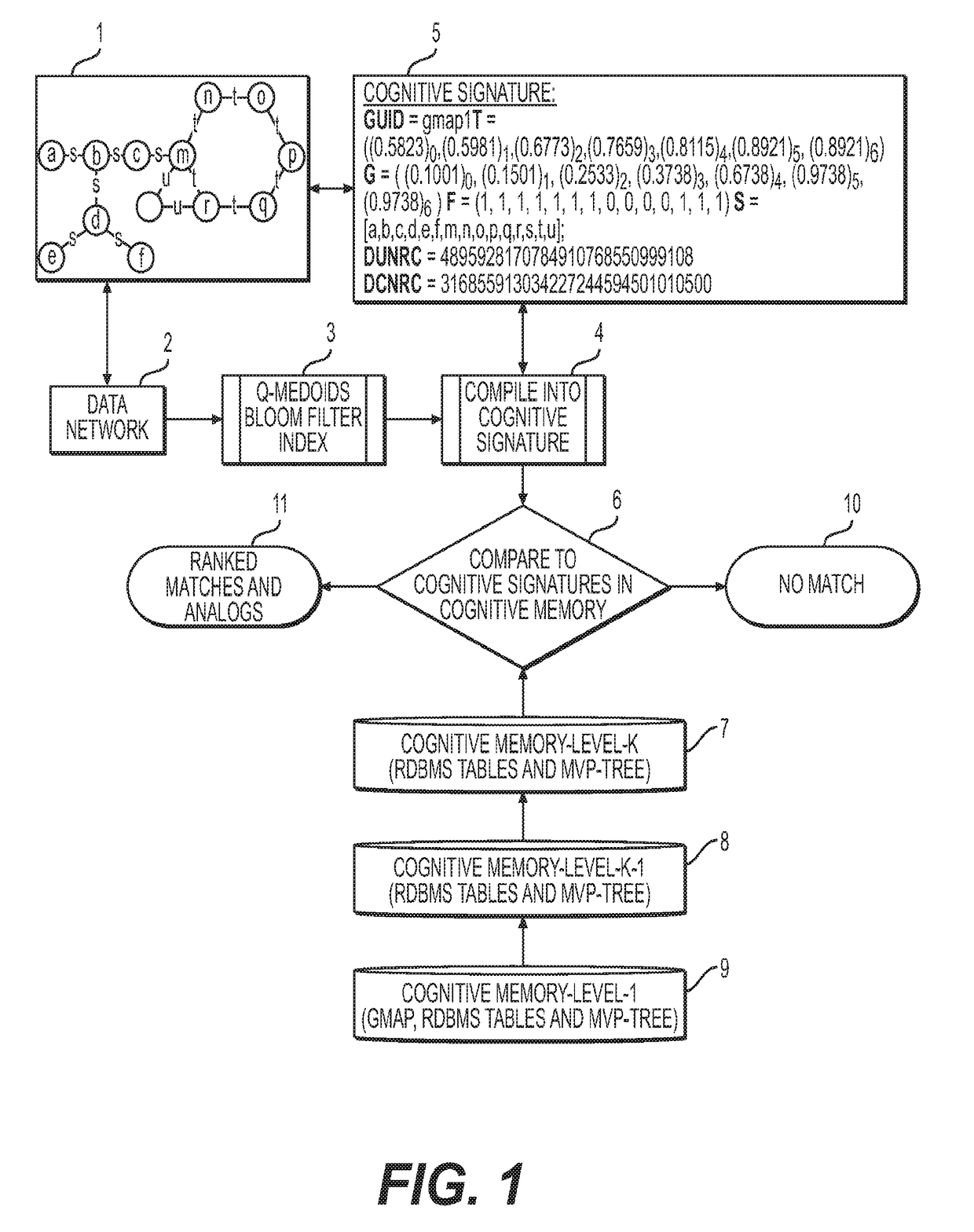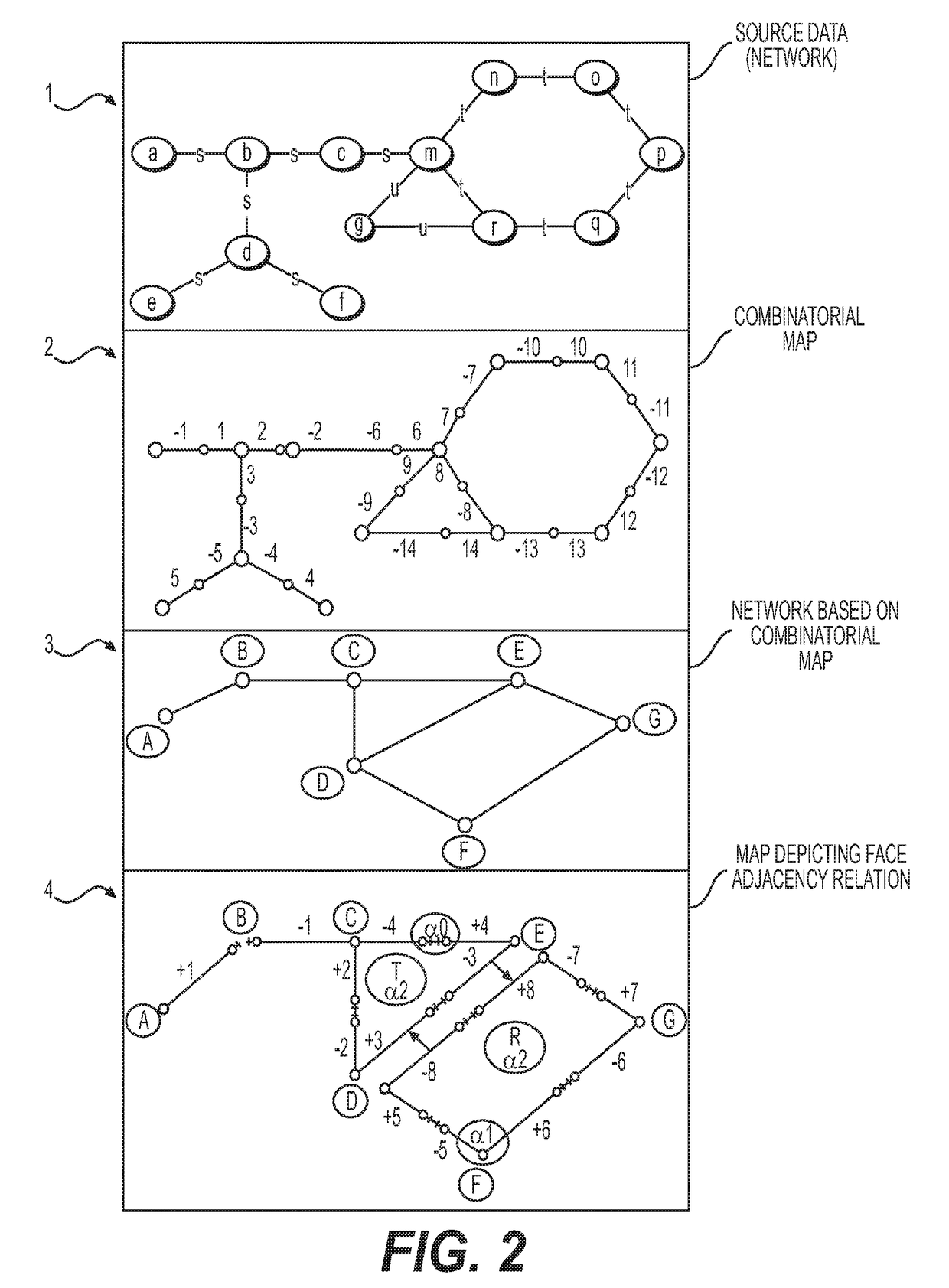Cognitive memory graph indexing, storage and retrieval
a graph indexing and graph technology, applied in the field of cognitive memory ” model, can solve the problems of insufficient content description of images, topological or geometric metrics on networks, when used alone and even in combination, and cannot be used as a tool to express complex, relational, graph based storage and retrieval,
- Summary
- Abstract
- Description
- Claims
- Application Information
AI Technical Summary
Benefits of technology
Problems solved by technology
Method used
Image
Examples
Embodiment Construction
[0041]Cognitive Memory is a new and greatly enhanced representation, method and algorithm for learning graph data and associating the structure of the graph with measures that are representative of observations of interest. See U.S. Pat. No. 9,158,847, incorporated herein by reference in its entirety. For example, the changes in the structures of the finance networks over time or the variations of traffic or transportation networks over time may be addressed by utilizing the Cognitive Memory model approach. Various graph kernels have become an efficient and widely-used method for measuring similarity between graphs, but these methods are not scalable past many millions or billions of nodes or data flows of the whole gigantic complex network. These huge graphs occur commonly in domains, such as natural language processing, as text graphs, chemoinformatics, as molecular structures and bioinformatics as proteome or biome networks, image analysis, such as medical image understanding, co...
PUM
 Login to View More
Login to View More Abstract
Description
Claims
Application Information
 Login to View More
Login to View More - R&D
- Intellectual Property
- Life Sciences
- Materials
- Tech Scout
- Unparalleled Data Quality
- Higher Quality Content
- 60% Fewer Hallucinations
Browse by: Latest US Patents, China's latest patents, Technical Efficacy Thesaurus, Application Domain, Technology Topic, Popular Technical Reports.
© 2025 PatSnap. All rights reserved.Legal|Privacy policy|Modern Slavery Act Transparency Statement|Sitemap|About US| Contact US: help@patsnap.com



